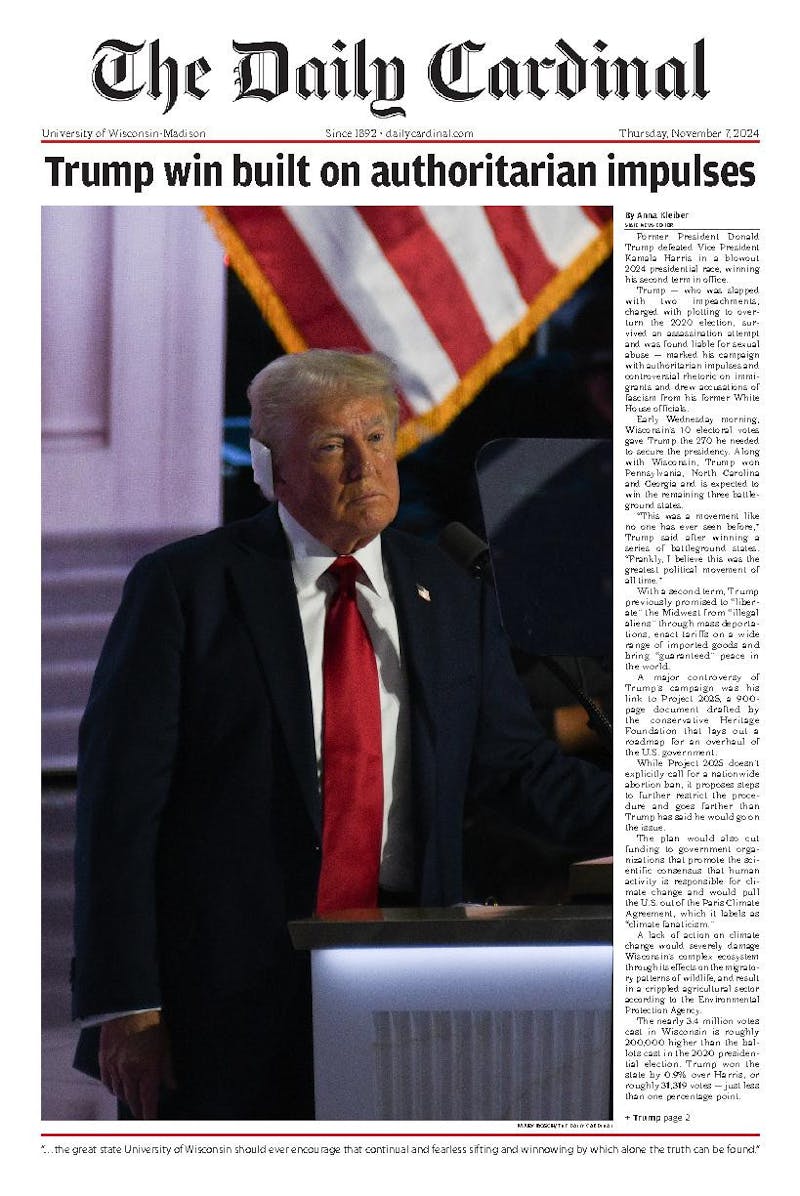At the entrance to the 8,000-square-foot Botany Greenhouse, a sign asks visitors to leave their book bags outside. The warm, humid greenhouse air sends the Wisconsin chill wafting away as lush, green plants tumble from all sides of the greenhouse.
Visitors from the Madison community will tour the greenhouse and 24 other exploration stations Saturday, April 3, at the beginning of UW-Madison's month-long Science Expeditions program.
\This place belongs to almost everyone,"" including students, taxpayers and community members, said Mohammad Fayyaz, director of the Botany Greenhouse and botanical gardens. ""People can come and visit, look around and learn a lot.""
Visitors wind through the eight rooms, watch small white birds dive among ferns and papyrus trees in the tropical room, and smell the Amazon lilies surrounding the Titan Arum, one of the world's tallest and most pungent plants.
The Titan Arum blooms only two to four times during its 40-year life span. Over 30,000 people visited the greenhouse during two flowerings in 2001 and 2002, Fayyaz said.
To welcome Science Expeditions participants, Fayyaz said posters will teach visitors about the tropical rainforest, desert and bog biomes, as well as the greenhouse's more than 1,000 species of plants.
The Science Expeditions program grew out of UW-Madison's 1999 open house to celebrate Wisconsin's sesquicentennial, according to co-organizer Tom Zinnen.
Zinnen said the program introduces the community to UW-Madison science and to the scientific process.
Ken Smith, an outreach specialist for the event, said it stimulates participants.
""We're going to need science to make the world work, so we have to communicate our story to thrive,"" Smith said.
Last year, about 800 people, mostly families from the Madison area, attended the program. It appeals to learners of all ages, Zinnen said.
Visitors are encouraged to explore science venues around campus, beginning from Engineering Hall at 1 p.m. Saturday.
""Venue matters,"" Zinnen said. ""We focus on programs that represent the venues so people will come and visit throughout the year. Just being here is a way to learn.""
Visitors from previous years may want to return to see the newly renovated and expanded botanical gardens outside Birge Hall. The gardens are the first in the world to be organized by the Angiosperm Phylogeny Group system, Fayyaz said, and they will also have wireless Internet access.
""In a garden, we plant 500 species of plants according to their family,"" Fayyaz said, meaning that plants are placed near their genetic relatives.
Scientists from around the world contributed data, helping group the plants in their evolutionary sequence. Organizing the garden in both an aesthetic and genetic order was challenging, Fayyaz said. ""It was exactly like a jigsaw puzzle.\





